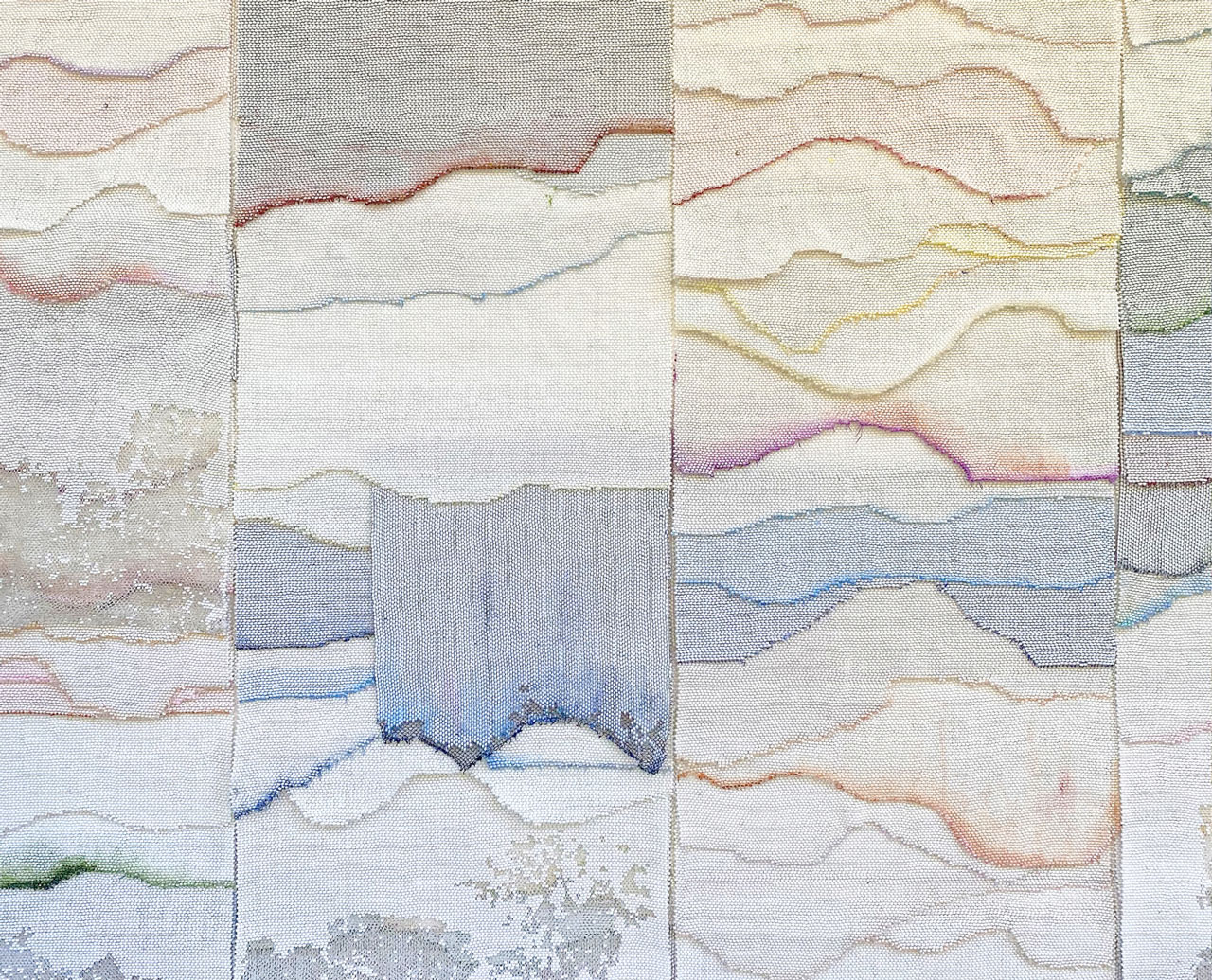ART-PREVIEW:Liza Lou-Both Sides, Now
 Liza Lou’s boundary-breaking work first gained international attention when her sculpture, “Kitchen” (1991-96), was shown at the New Museum in New York in 1996. Her sculptures, room-size installations, and performances have broken boundaries between art and craft, sculpture and painting. In 2005 Lou founded a studio in KwaZulu-Natal, South Africa to work with women deeply versed in the tradition of beadwork to assist her in the making her larger scale work, with the aim to create real social change.Liza Lou’s boundary-breaking work first gained international attention when her sculpture, “Kitchen” (1991-96), was shown at the New Museum in New York in 1996. Her sculptures, room-size installations, and performances have broken boundaries between art and craft, sculpture and painting. In 2005 Lou founded a studio in KwaZulu-Natal, South Africa to work with women deeply versed in the tradition of beadwork to assist her in the making her larger scale work, with the aim to create real social change.
Liza Lou’s boundary-breaking work first gained international attention when her sculpture, “Kitchen” (1991-96), was shown at the New Museum in New York in 1996. Her sculptures, room-size installations, and performances have broken boundaries between art and craft, sculpture and painting. In 2005 Lou founded a studio in KwaZulu-Natal, South Africa to work with women deeply versed in the tradition of beadwork to assist her in the making her larger scale work, with the aim to create real social change.Liza Lou’s boundary-breaking work first gained international attention when her sculpture, “Kitchen” (1991-96), was shown at the New Museum in New York in 1996. Her sculptures, room-size installations, and performances have broken boundaries between art and craft, sculpture and painting. In 2005 Lou founded a studio in KwaZulu-Natal, South Africa to work with women deeply versed in the tradition of beadwork to assist her in the making her larger scale work, with the aim to create real social change.
By Efi Michalarou
Photo: Lehmann Maupin Gallery Archive
Νew and recent works by Liza Lou are on show in her solo exhibition “Both Sides, Now” at Lehmann Maupin’s Gallery newly opened Palm Beach space. Showcasing a wide range of Lou’s practice, including painting, sculpture, and drawing this f presentation highlights Lou’s decades-long utilization of labor intensive processes and glass beads as metaphor, painting surface, and sculptural form. Prominently featured in this presentation is “Both Sides, Now” (2019-21), a continuation of her “Clouds” series, in which Lou paints and layers sheets of hand woven beaded cloths and then, in a subtractive process, hammers the beads off their threads, revealing lace-like tracery inside the meticulous beadwork, creating a sfumato-like effect between the multiple layers of beads, threads, and lushly painted surfaces. The monochromatic and duo-colored canvases from the “Solid|Divide” (2012–16) series explore the emotive potential of pure color and the beauty created by the oils of the human hand. Subtle variations and streaks present in each work are the result of a collaborative process of the work’s creation between the artist and her studio team in Durban, South Africa. The exhibition also includes two large-scale examples of Lou’s drawing practice: “Drawing Water” and “Chopping Wood” (both from 2020), where Lou repeatedly marks a smooth, gessoed canvas with circular ink forms. Calling forth thematic and formal concerns that have stretched across Lou’s career, the drawings employ repetitive mark-making which take on amorphous, biological associations.
Liza Lou first gained attention in 1996 when her room-sized sculpture Kitchen was shown at the New Museum in New York. Representing five years of individual labor, this groundbreaking work subverted prevalent standards of art by introducing glass beads as a fine art material. Through its slow, hand-made process, Kitchen became a monument to women whose labor has historically gone unrecognized. The project blurred the rigid boundary between fine art and craft, and established Lou’s long-standing exploration of materiality, beauty, and the valorization of labor. Working within a craft métier has led the artist to work in a variety of socially engaged settings, from community groups in Los Angeles, to a collective she founded in Durban, South Africa in 2005, to a women’s prison in Belém, Brazi, and a bead embroidery collective in Mumbai, India. Over the past 15 years, Lou has focused on a poetic approach to abstraction as a way to highlight the process underlying her work. In addition to using the variations of color caused by the natural oils of the human hand as a form of tonal mark-making, the artist applies layers of paint, scraping and wiping it across bead-woven cloths, which she then carves into with a hammer in order to reveal the delicate network of thread hidden inside the beads. Lou recently began Apartogether, a community art project founded at the onset of the Covid-19 pandemic to foster connection and creativity during a time of social distancing and isolation. The project began with a prompt to makers around the world to create a comfort blanket that will be displayed alongside one produced by Lou and other participating artists at the end of the quarantine. She has also begun a conversation series with numerous artists around Apartogether to foster open and honest dialogue about what it means to be an artist at a time of great loss and suffering.
Photo: Liza Lou, Both Sides, Now, 2021 (detail), © Liza Lou, Courtesy the artist and Lehmann Maupin Gallery
Info: Lehmann Maupin Gallery, Corner of Worth Avenue & S. County Road 440 S, Palm Beach, Duration: 28/1-20/2/2021, Days & Hours: Tue-Sat 11:00-18:00, www.lehmannmaupin.com
